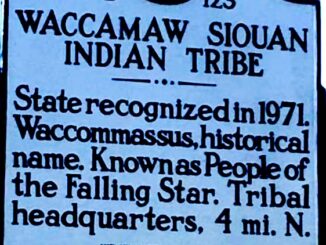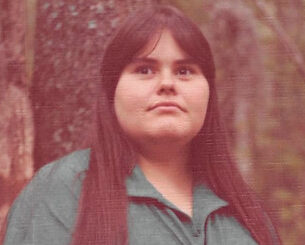
Paint covers some of the marks. Others are barely visible behind moss, mold and dust. In some cases, the lines where the waters rose are worn like battle scars, reminders of the times the water was unforgiving and relentless, and equally irresistible in its power.
I have always had a love-hate relationship with hurricanes. I love the power, the majesty of roaring winds and driving rains. I love writing the stories that come out of hurricanes, where folks work together regardless of color or race or politics or favorite soft drink. I admit, I love the adrenaline rush of covering storms, even though that recklessness has dulled somewhat after nearly 30 years of intentionally driving into conditions intelligent, reasonable people avoid.
I hate them, however, for some of the same reasons I love them. I hate the destruction, the loss of property, the fear and frustration in people’s eyes, especially when they hear those oft-repeated words, “I’m from the government and I’m here to help.” We became part of that reluctant club during and after Matthew, with water flowing through our home, then trailer after trailer of things we considered important turned into moldy, mushy mess. My sister in Louisiana and her family went through it with Katrina. Fran and Floyd were more nuisances and adventures than disasters for Miss Rhonda and me.
Our experiences in Matthew, and the outpouring from folks we didn’t know as well as those close to us, were a catalyst to try to do more to help others during and after Florence.
It’s hard not to find a town or community in our part of the state without at least one reminder of Matthew or Florence, and sometimes even Fran and Floyd.
Farm sheds and homes no one had loved for years are even lonelier, what with a giant, leaning but thriving Chinaball tree growing through a rusted roof. New bridges replacing old culverts that some basement-dwelling engineer thought would be better for waterflow. I happened on one place a while back where a collection of antique farm equipment was finally being collected by an excavator and dropped in a dump truck. The once-impressive display had become a jumbled mess of rusting, toxin-covered iron under six feet of Florence’s flooding.
One thing that stands out to me is the lines on houses, trees, buildings and stores. The lines show where the water finally peaked. In most cases it held on for at least a few days, sometimes longer, before receding. Everything in the water – tannin, algae, road grime, agricultural runoff, sewage, and just plain mud – left a mark.
Some of those bad memories are finally disappearing, but they’re taking the good ones with them. I know of one store with eight-foot tall glass windows that are now covered completely in mold. When last I visited, a display of seeds in the window had sprouted, and the seedlings was fighting for the sunlight that shone through the remains of a roof. A good friend told me about buying his first rifle there, as well as his first dozen traps. As my friend is getting on in years, I wonder how many generations of boys and girls timidly yet excitedly made their way through the wood-framed double doors to hand over a coffee can of hard-earned savings, then pointed at the purchase they’d dreamt of for months.
I know of several stores that bear high water marks; one in particular was functioning up until Florence. The counter, when last I saw it, had the patina of local pine polished by thousands of gingham, floursack, flannel and chambray sleeves retrieving purchases across its wideboard top. There was a peculiar worn spot on the edge near the old cash register. I wondered why there was such a significant depression in the wood until I leaned against it to pay for a summer’s day ice cream. Mine was not the first hip to lean there while someone joked with the clerk.
For more than a century, through good and bad times, the store had served its community, from barefoot children and wagon-driving farmers as tired as their mules to tourists and hunters, then folks who moved to the country to escape the nightmare of the city. Although its inventory changed dramatically through the years, the store held on long after the last “long credit” account was paid for by a tobacco crop, and well into the era when a vinyl sticker announced free wifi on the creaking front door.
The owners actually kept it open during Matthew, even when an oak tree crashed beside the building. That tree’s kinsman survived until Florence, when the store finally flooded for good. At my last visit to the sad shell of what had been a community anchor, a rusted chain still awaited a new tire swing to continue the generations-old tradition of being a “tourist friendly” stop. The windows were all broken and boarded over. You could smell the mold and stink of sadness from 20 feet away. The waterlines were fading, but still clearly showed that the beautiful counter inside had been underwater.
The last storm did too much damage, and the land is now clear. The store, its adjacent shed, and the broken oak tree with the rusted chain– they are now just memories, things that once happened at what is now a grassy spot at a strategic crossroads.
Somewhere I have a watch that I picked up from the remains of a home washed through by Hurricane Floyd. The red clay running downstream turned into a fine dust that settled and stuck to everything in that home, where an elderly man once would tell me to look “over yonder,” then explain what had been at that particular spot when he was a child and why it was important. He died before the storm, and the house was basically abandoned before being broken open by the flood. The watch wasn’t anything special, but I tried finding the old man’s family. They had disappeared, however, as though they too had been washed downstream.
The water lines on that house were above my head in some places; I tried to imagine the power of six feet plus of water miles wide. That type of power pushes through walls if it doesn’t carry them away.
There’s a lot of hurricane relief money being thrown around these days, some by well-meaning people, some by politicians with more suspect intentions. The agencies handing out the money have inspirational names and plans, supported by bold, ambitious mission statements. Some will undoubtedly do some good.
In the rush to bulldoze the old and moldy, however, I just hope some folks realize what they are pushing down and hauling off. I understand that much cannot be saved; that’s why six years after Matthew, and four years after Florence, we’re still cleaning up. There is still a lot to do, and more storms are always on the horizon.
But I sincerely hope that when the last papers are signed and the last checks written and the crews fire up their heavy equipment, someone takes a moment to remember everything that happened in those old homes and stores, back before the storms left their lines on the walls.
















